Panel Meters
Filters
Filters
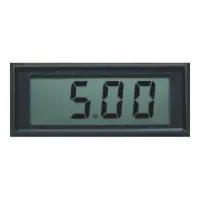
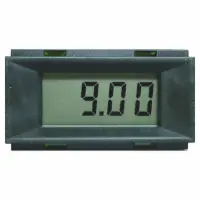
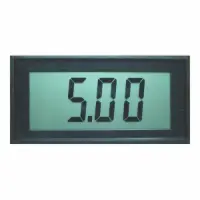
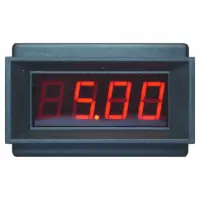
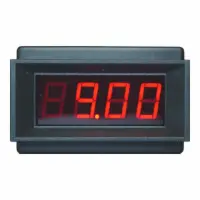
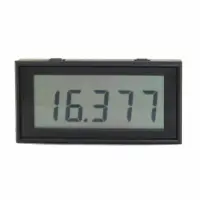
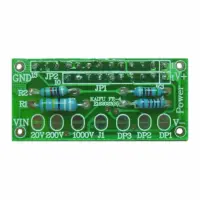
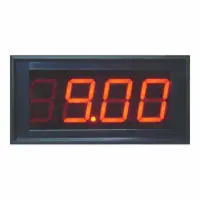
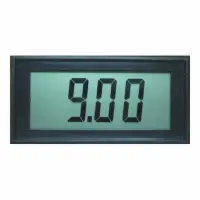
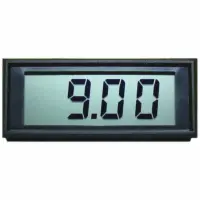
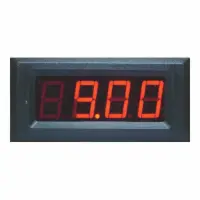
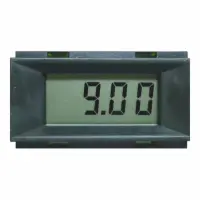
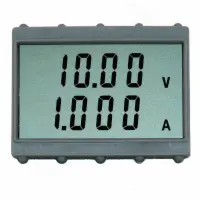
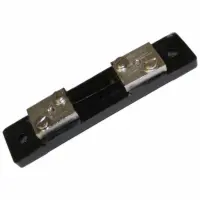
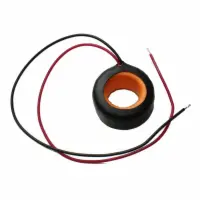
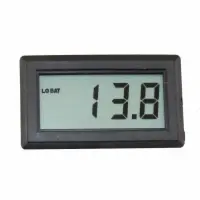
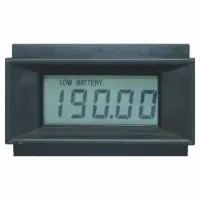
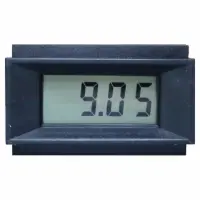
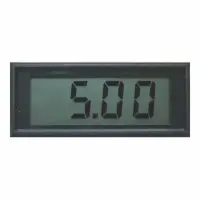
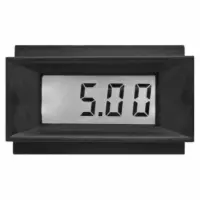
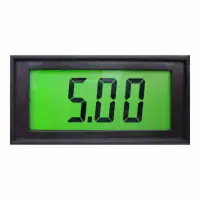
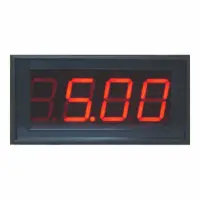
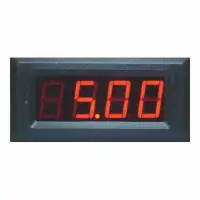
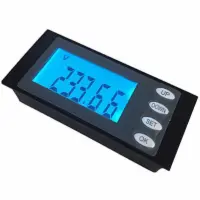
Digital panel meter shows the reading of the input signal in digital form. These signal inputs such as voltage, current, or resistance are often measured from a sensor that is converted and displayed as temperature, pressure, and so on.
It is often preferred over analog panel meter for its convenience since it allows you to look at the readings from a distance. This type of panel meter is often mounted in a panel, making it easier for people to see and read.
Having a digital panel meter makes it easier for you to track and see any slight changes in the readings. Since slight changes in the analog panel meters are not that noticeable, digital panel meters are best used in situations where there are only minimal changes in the reading.
It is a type of panel meter that is generally ideal for smoothing out noisy signals. Since the digital display allows you to clearly read your signal’s modulation without the noise, you can easily track and smooth out any slight changes in the reading.
Types of display
Digital panel meters are often distinguished by how they display their readings. Given that the type of display has different usability, it is best to be familiar with the different design first. This way, you would be able to identify which one is best suited for you and your needs.
LCD vs LED
The difference between these two types of display are mostly in terms of visibility.
Most Liquid Crystal Display or LCD do not have built-in backlighting, which means it would be harder to see the readings in low light. It displays the readings in a dark font color over a gray or green screen. LCD usually requires slight ambient light or additional backlighting in order to be readable and visible.
With that, purchasing an LCD panel meter is highly advisable if you are only planning to mount it in a well-lit space. It is also worth mentioning that LCDs sometimes become unreadable when you are viewing it from the side or off the angle center point.
The typical Light Emitting Diode or LED, on the other hand, has greater usability in dark places. It also uses less energy than the conventional LCDs. Since LEDs are semiconductors, they offer a wide temperature range too. As compared to other types of LCD that slow down at a certain temperature, LED meters have better operating temperature limits.
It has a brighter display, allowing you to view the readings from a different light and angle. Its default font color is usually red and it has a higher contrast that enhances its usability in low light.
It is worth noting, however, that there are now new types of LED and LCD panel meter. Some LCD panel meters now have better backlighting for easy viewing, and some LED panels now offer different color displays for better classification.
Recommended LED Panel Meter
One of the most convenient LED panel meters to use. You can easily import the signal between the IN and GND connectors. It has a Dual-Slope Integration A-D converter system and a sampling rate of 2-3/sec.
Other features include:
Maximum Input: 199.99mV DC
Indication Method: 19999 count LED display with automatic polarity indication
Over-Range Indication: "1"
Input Impedance: over 100MΩ
Power Supply: 5V DC
Size: 3 5/16" x 1 5/8" (84mm x 42mm)
Numeric vs Alphanumeric
An alphanumeric display is usually present in an LCD digital panel meter. It can display both numbers and letters on the screen, making it highly suitable and adaptable to complex signal readings.
Some digital panel meters with alphanumeric displays are customizable, which means you can modify and change the setting of the displayed content. For instance, a digital panel meter for temperature has the flexibility to display its reading in Celsius or Fahrenheit.
Numeric displays, on the other hand, are usually used in LED displays. If you are planning on buying different panel meters for different applications, then it might be best to buy a LED numeric display instead.
Since some LED panels can display readings in different colors, it would be much easier to distinguish different readings from each one. Setting different colors for different applications would allow you to quickly identify each different reading. In this case, you do not necessarily need the LCD’s alphanumeric customizable feature.
Number of digits displayed
To put it simply, these are the number of digits that can be displayed in the panel meter.
-
3.5 or 3-1/2 means it can display readings on the screen for up to 199.9
-
4.5 or 4-1/2 means it can display readings on the screen for up to 1999.9
Power Source
Unlike analog panel meters that do not need a power source, digital panel meters require a power source for its function.
Digital panel meters use an electric circuit to convert analog input to a display input. Despite other digital panel meters claiming that they are “self-powered” or “self-contained,” they still need some kind of power source in order to function.
Average read rate
Depending on where and how would you use the digital panel meter, you should also assess the conversation rate per second. This way, you would be able to determine which type of digital panel meter you should buy.
Accuracy for digital panel meters is usually between 0.01% to 1% of reading. This type of panel requires less interpolation because of its digital display.
Added features on new digital panel meters
These functionalities are not common in the most basic digital panel meter; they are mostly present in new models of digital panel meters.
-
Setpoints and alarms feature allows you to set limits on your panel meter. When the input reaches the setpoint, it will then trigger a visual or audio alarm. This added feature is a must-have for those who want to control and maintain their process parameters.
-
Adjustable display as we previously mentioned, some digital panel meters are customizable and can be adjusted to show different displays. This added feature is highly recommended for hobbyists that do not necessarily use their panel meter on a wider or industry scale.
-
USB Port is not the most common feature of a digital panel meter, but it is especially used in different industries because it allows you to store and archive all the readings on a computer.
Different types of input or readings
-
Temperature
-
Resistance
-
DC Voltage
-
DC Current
-
DC Power
-
AC Voltage
-
AC Current
-
AC Power
How does it work
The basic principle of any panel meter is quite simple, which is to measure and provide a visual countable representation.
Like any panel meter, digital panel meters work the same way. The only difference it has over the analog panel meter is the way it displays input and readings.
Scaling is one of the main functions of a digital panel meter. It converts the signal output from various sensors into a physical measurement unit.
As we mentioned before, a digital panel meter is able to measure and display different inputs and units. However, there are several steps that you need to do in order to measure and display different inputs effectively.
For example, you need to use or install other supplementary devices for high-magnitude measurements such as in current or voltage transformers. Voltage is commonly obtained across the load while current measurement is in a series configuration.
Some digital panel meter requires you to have a fixed resistor called a shunt in order to display current or voltage. An external shunt allows the panel meter to display a higher DC than with just a self-contained internal shunt.
How to use it
Since measuring different signals requires you to use or install other supplementary devices, listed below are some of the ways how other people use digital panel meters to measure different signals
High DC
Some use shunt resistors to convert a DC to a DC voltage. This in turn would allow them to measure high DC voltages that exceeded the measurement range of the digital panel meter.
High DC Voltages
When a DC exceeds the measurement range of the digital panel meter, some use an external voltage dividing circuit to divide the voltage. This way, they would be able to measure the DC.
The formula to use in dividing the voltage is
E2 = ( R2 / R1 + R2 ) x E1
E is Voltage and R is Resistance
You can also use the capacity (W) of R1 and R2
W = 3 (I2 × (R1 or R2))
High AC
To measure high AC currents, some reduce the current flow by installing an external current transformer. Apart from that, some also convert a DC voltage to a DC signal for measurement by installing an additional current transformer transducer.
High AC Voltages
When an AC voltage exceeds the measurement range of the digital panel meter, some reduce the voltage by using an external power transformer. To convert a DC voltage to a DC signal for measurement, some install power transformers.
Non-linear signals, sensor signals, and other forms of signals
To measure anything related to electrical output like power, frequency, or any other forms of signal, some convert DC voltage to DC by using a power transducer or signal converter.
With that, you should try and make sure that the applied load does not exceed the rated power of your digital panel meter.
Apart from the measuring tips that we cited above, other people have also come up with different ways of using their digital panel meters. Having said that, you should explore your options and look for other ways so that you can effectively utilize your panel meter.
Recommended AC panel meter
80-260 Volt 0-20 Amp AC Panel Meter
This digital panel has a large LCD, allowing you to easily switch your view to voltage, current, and energy. Despite being an LCD panel meter, you can still use it in a dark place because of its backlight function.
It runs on active power, and has a reset function of energy and running time keys.
This product also has an added feature like the overload alarm function and data storage. You can set a limit in this panel meter, and when it reaches the limit, it would then trigger an alarm. It also stores data every time the power is off.
Specifications include:
Working voltage: 80 ~ 270VAC
Test voltage: 80 ~ 270VAC
Rated power: 20A/4400W
Operating frequency: 45-65Hz
Measurement accuracy: 1.0 grade
Outside Dimensions: 96.4mm x 44mm x 24mm
Digital panel meter application
Digital panel meters are used extensively in process control equipment to track humidity, pressure, and so on. Apart from that, it can also be used to monitor an electrical equipment performance by displaying its voltage or current information in the panel meter.
One example of a digital panel meter application is in large industrial motors. Since industrial motors are sometimes sensitive to fluctuations in voltage, you can easily monitor incoming voltage, detect if there is any problem, and immediately remedy the situation.
Finding the right digital panel meter
As we cited above, different digital panel meters display different input or readings. There are digital panel meters that are able to measure different scales at once, while there are others that can only display unit temperatures like Celsius or Fahrenheit.
Examples of which are digital temperature displays like Extended-Range Digital Temperature Display – Celsius. This type of digital panel meter has a simple function and it can only monitor the temperature.
Some of its features include:
Polarity: Automatic, (-) for Minus, no indication for positive polarity
Temperature range: -30°C to +100°C
Meter working temperature: 0°C to 50°C
Fixing method: plug-in
Cable length: approx. 50in (127cm)
Battery: 1 x 1.5V, AG13 (Battery Not Included)
So with that, you need to know which type of digital panel meter is best suited for you and your needs. Even though most digital panel meters can measure multiple variables in different units, it is still best to double-check its specifications and usability.
If you have any question please feel free to reach out to us: sales@circuitspecialists.com
